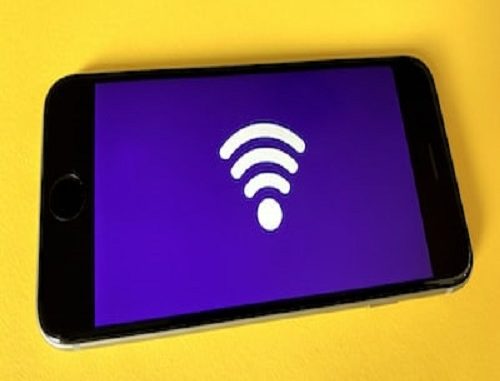
In today’s digital age, Wi-Fi has become an essential part of our lives. We rely on it for internet connectivity on our smartphones, tablets, and other Android devices. While connecting to Wi-Fi networks is relatively easy, remembering complex passwords can be challenging. Fortunately, Android devices offer ways to view saved Wi-Fi passwords, enabling users to retrieve and use them when needed.
WiFi networks, as we all know, are password-protected. When we want to join to a network, we input its password and use the Internet. When we turn on WiFi, our devices will automatically join to those networks. But what if we forget our WiFi password?
If you’ve been wondering how to figure out the password on your Android phone, you’re in luck. Viewing saved WiFi passwords on your Android phone is simple. It can be used to connect to WiFi on other devices or shared with others. In this comprehensive guide, we will explore multiple methods to view saved Wi-Fi passwords on Android, ensuring you never have to struggle with forgotten passwords again.

View Saved Wifi Passwords Using the Settings App on Android
The Settings app on Android is one of the simplest ways to view saved Wi-Fi passwords. Follow these steps to access and retrieve your Wi-Fi password.
- Step 1: Accessing the Settings menu on Android: Start by unlocking your Android device and locating the Settings app. It is usually represented by a gear or cogwheel icon on the home screen or in the app drawer.
- Step 2: Navigating to the Wi-Fi settings: Within the Settings menu, scroll down and select the “Wi-Fi” option. This will open the Wi-Fi settings page, displaying the available Wi-Fi networks.
- Step 3: Finding the saved Wi-Fi network: Look for the Wi-Fi network for which you want to view the password. Tap on the network name to access its settings.
- Step 4: Viewing the Wi-Fi password: On the Wi-Fi network settings page, you should see an option called “Show password” or a similar label. Tap on it, and a pop-up window will display the saved Wi-Fi password.
View Saved Wi-fi Passwords on Android Using Google Lens
To view stored Wi-Fi passwords with Google Lens on Android, Follow these steps to access and retrieve your Wi-Fi password.
- Install Google Lens from the “Google Playstore“.
- Open Google Lens and open the “screenshot of the code QR“.
- It will automatically “scan the QR code” and show you the “password at the bottom” of the screen.
View Saved WiFi Passwords on Android Using Router Configuration Page
To view saved Wi-Fi passwords via the router settings page, you must first know the router login address and credentials. They can be found on your router or on the internet, depending on the manufacturer.
To view stored Wi-Fi passwords using router configuration page, Follow these steps to access and retrieve your Wi-Fi password.
- Open a “web browser” on your mobile phone.
- Enter the “router configuration page address” and log in with the credentials.
- Click on the “Wireless tab” to find the password.
View Saved WiFi Passwords on Android Using Third-Party Apps
If you prefer a more user-friendly approach or your Android device doesn’t offer a native option to view saved Wi-Fi passwords, you can turn to third-party apps. These apps provide additional features and convenience. Here’s how you can use a third-party app to view Wi-Fi passwords:
Introduction to third-party apps for viewing saved Wi-Fi passwords
There are several reliable apps available on the Google Play Store that can help you retrieve and view saved Wi-Fi passwords. Some popular options include Wi-Fi Password Recovery, WiFi Password Show, and WiFi Password Viewer. Install and launch one of these apps on your Android device.
Recommending popular Wi-Fi password viewer apps for Android
Choose a reputable app based on user reviews and ratings. Make sure to read the app’s description and check if it requires any specific permissions to function.
Step-by-step guide on using a selected app to view Wi-Fi passwords
Launch the installed app on your Android device. The app will scan and retrieve the saved Wi-Fi passwords on your device. Once the scanning process is complete, you should be able to view a list of all the saved Wi-Fi networks, along with their corresponding passwords.
View Saved WiFi Passwords on Android Using ADB Commands
Advanced users who are comfortable with executing commands can use the Android Debug Bridge (ADB) method to view saved Wi-Fi passwords. This method requires a computer and a USB cable to establish a connection between your Android device and the computer. Follow these steps:
What is ADB (Android Debug Bridge) and its role in viewing Wi-Fi passwords
ADB is a versatile command-line tool that allows communication between a computer and an Android device. By using ADB commands, you can access and retrieve system-level information, including saved Wi-Fi passwords.
Step 1: Enabling USB Debugging on Android: Before using ADB commands, you need to enable USB Debugging on your Android device. To do this, go to the Settings menu, select “About phone,” and tap on the “Build number” multiple times until the “Developer options” are enabled. Then, navigate to “Developer options” and toggle on “USB Debugging.”
Step 2: Connecting Android device to a computer: Connect your Android device to a computer using a USB cable. Ensure that the computer has ADB drivers installed.
Step 3: Executing ADB commands to view Wi-Fi passwords: Open a command prompt or terminal window on your computer and navigate to the directory where ADB is installed. Enter the following command: “adb devices” to verify if your Android device is detected. Once detected, execute the command “adb shell” to access the Android device’s shell. Finally, enter the command “su” to gain root access and then execute the command “cat /data/misc/wifi/wpa_supplicant.conf” to view the saved Wi-Fi passwords.
Precautions and Security Considerations While retrieving Wi-Fi passwords
While retrieving Wi-Fi passwords can be helpful, it’s essential to prioritize privacy and security. Here are some precautions to keep in mind:
Highlighting the importance of privacy and security when accessing Wi-Fi passwords: Ensure that you have permission to view the Wi-Fi passwords stored on your Android device. Respect the privacy of others and only retrieve passwords for networks you have the right to access.
Reminding users to exercise caution when using third-party apps or executing ADB commands: When using third-party apps, read user reviews and stick to reputable apps from trusted developers. Be cautious while granting permissions to apps and avoid apps that ask for excessive access to your device’s data. Similarly, when using ADB commands, follow the instructions carefully and execute commands from trusted sources to minimize the risk of unauthorized access or data breaches.
Recommending password management tools for securely storing and managing Wi-Fi passwords: Consider using password management tools like LastPass, Dashlane, or Bitwarden to securely store and manage your Wi-Fi passwords. These tools provide encrypted storage and simplify password management across multiple devices.
Conclusion
Retrieving saved Wi-Fi passwords on Android devices is a useful skill that can come in handy in various situations. In this comprehensive guide, we explored three methods to view saved Wi-Fi passwords on Android: using the Android Settings, utilizing third-party apps, and executing ADB commands. Remember to prioritize privacy and security when accessing Wi-Fi passwords and consider using password management tools for secure password storage. With these methods and precautions in mind, you can confidently manage and access your Wi-Fi passwords on your Android device, ensuring seamless connectivity whenever you need it.
Leave a Reply